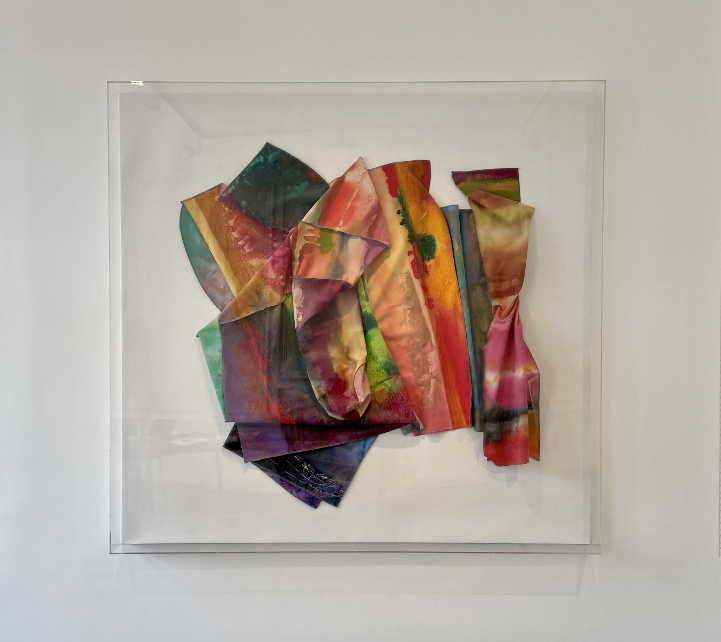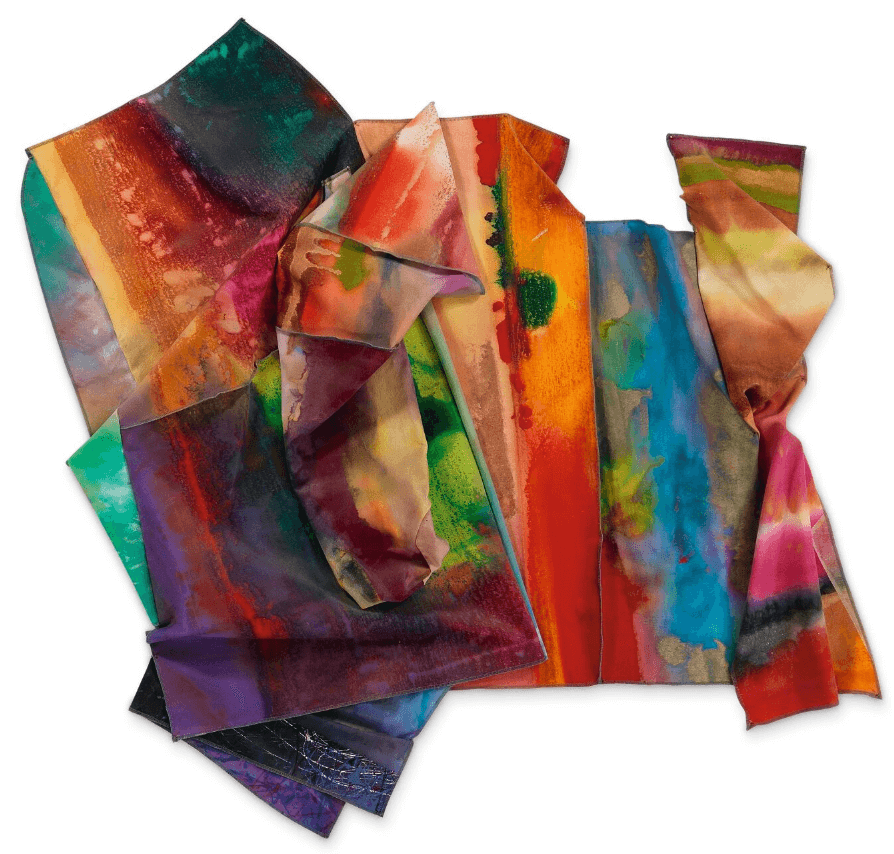
About the artist
Sam Gilliam (born November 30, 1933) is an African American multi-media artist, associated with colour field painting and the lyrical abstractionist movement. Born in Tupelo, Mississippi, Gilliam’s work defined the radical and experimental Washington Colour School, a group of Washington, D.C. area artists that developed a distinct form of abstract in the 1950s and 1960s.
Gilliam works on stretched, draped and wrapped canvas, adding sculptural, 3D elements that further his deconstruction of traditional composition. He is recognized as the first artist to introduce the idea of a dressed, painted canvas, suspended without stretcher bars, around 1965, a major contribution to the Colour Field School.
In his more recent work, Gilliam has worked with polypropylene, computer generated imaging, metallic and iridescent acrylics, handmade paper, aluminium, steel, plywood, and plastic, creating expanded paintings that challenge canonic notions of abstraction.
About the artwork
Gilliam is one of the world’s foremost, living, abstract painters. He has been the subject of major International retrospectives at DIA: Beacon, New York; The Hirschhorn Museum, Washington D.C. and the Philadelphia Museum of Art. He was also the US representative in the 1972 Venice Biennale - thefirst African American to do so. His work is collected by The Tate Modern, London; The Museum of Modern Art, New York and The Guggenheim Museum, New York.
This particular work was created in 1967 at the exact moment when Gilliam started his first radical act in painting: taking the canvas off the stretcher. Gilliam was also married to Dorothy Butler-Gilliam, the first African American female journalist of the Washington Post. At the inception of the civil rights movement his political engagement was at the core of his practice.
At a time when African American artists were expected to create figurative works addressing racial issues, typically representing the tenets and key figures of the movement, Gilliam contrarily chose to convey an emotional understanding of his lived experience. His work reflects his own reality as a black man and the emotions brought to the surface by the Civil Rights Movement; as such, his paintings constitute a sort of transcendental meditation on the canvas. Although he was censored by black nationalists, and accused of adopting ‘white aesthetics’, others heralded his genius.
For example, Jack Whitten, another important African American artist of the period, clearly speaks of Gilliam’s work as having a “black sensibility” - a deep emotional understanding of the question of race in 1960s America. Sydney (1967-1995) was started one year prior to Martin Luther King’s Jr. assassination. Although the Civil Rights Act had been passed in 1964, the turmoil in the Capital was still extremely present and Gilliam’s work remained a constant dialogue between art and politics; revolutionary ideas; and, day to day personal reality.
